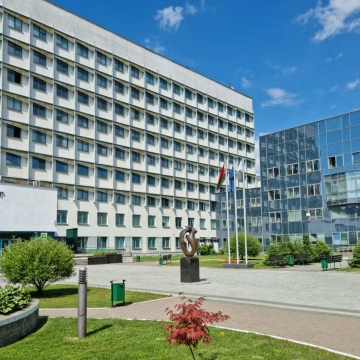
Post-infarction complications are conditions that develop after a myocardial infarction (MI) and can threaten the patient's life or significantly impair its quality. Treatment is aimed at relieving acute complications, restoring cardiac function, and preventing recurrence.
Main post-infarction complications and their treatment in Belarus
- Acute heart failure (AHF). Impaired ability of the heart to pump blood effectively.
- Cardiogenic shock. A critical condition with a sharp decrease in tissue perfusion.
- Arrhythmias. Heart rhythm disturbances, including ventricular fibrillation.
- Postinfarction pericarditis. Inflammation of the sac around the heart (pericardium).
- Left ventricular aneurysm. A bulge in the heart wall with a risk of rupture.
- Thromboembolic complications. Formation of blood clots with possible embolism.
- Recurrent infarction. Repeated damage to the heart muscle.
Methods for diagnosing post-infarction complications
To assess the patient's condition and identify complications, the following are used:
- ECG (electrocardiography) . Helps identify rhythm disturbances and residual changes after a heart attack.
- Echocardiography (ultrasound of the heart) evaluates the contractility of the heart and the presence of aneurysms.
- Coronary angiography examines the condition of the coronary vessels and their patency.
- Blood tests detect markers of inflammation, thrombosis, and metabolic disorders.
- Cardiac MRI . For a detailed assessment of the heart's structure and the extent of damage.
Treatment methods for post-infarction complications in the Republic of Belarus
Drug therapy. Prescribed to control symptoms, prevent complications, and support cardiac function:
- Anticoagulants and antiplatelet agents to prevent blood clots.
- Beta blockers to reduce the load on the heart.
- ACE inhibitors to improve heart muscle function.
- Diuretics to relieve swelling in heart failure.
Invasive procedures.
- Stenting or angioplasty to restore blood flow in the coronary arteries.
- Implantation of intracardiac devices for severe rhythm and conduction disorders.
- Heart surgery, including aneurysm repair or bypass surgery.
Rehabilitation. Rehabilitation programs include:
- Physiotherapy to restore physical activity.
- Diet therapy with an emphasis on lowering cholesterol levels and weight control.
- Psychological support to reduce stress and prevent depression.
Chronic disease management. Treating comorbid conditions such as hypertension or diabetes reduces the risk of recurring complications.
In Belarus, treatment for post-infarction complications is performed in specialized cardiology centers using modern technologies and rehabilitation methods. Patients receive an individualized approach, including medication, surgical interventions, and comprehensive rehabilitation.

